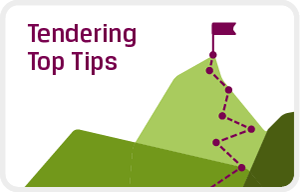Choice of Language
Latin abbreviations are not recommended when writing plain English so they should be avoided in bid and tender documents.
Instead of writing ‘e.g.’ simply put ‘for example’.
If you think you need to use ‘i.e.’ (meaning ‘that is’), perhaps you should have explained yourself more clearly in the first place.
Cover Letter
A proposal’s cover letter should be thought of as a mini executive summary.
You should avoid merely stating your appreciation for the opportunity to submit an offer or your ability to comply with their requirements.
The letter should be upbeat, compelling and include clear guidance about the next steps and/or contact information.
Time Scales
If you have a big document to produce it is helpful to know how much time you will need to complete it.
The first step is to collect rough figures about the time it normally takes you to draft, to tailor and to proofread material.
You can calculate the number of hours needed by using your times, the type of writing and the number of pages required.
Pricing High
Deciding how much profit margin to add to your price can be difficult, especially when you are in a competitive situation.
When writing a proposal or tender, you have the opportunity to justify the amount you charge by describing the value of your service.
Once you are confident that you have captured the value, you can increase the price accordingly.
Planned Success
Successful bid and tender writers display many of the same qualities as good project managers.
They plan their time and resources carefully whilst also balancing client and company pressures.
While not every bid will win the work, they can all be successful in terms of delivering a strong document in a cost effective and timely manner.
New Findings
It may be tempting to start the New Year afresh however good practice involves learning from what has gone before.
A quick analysis of your previous year’s bids and proposals will probably provide some useful insights.
Having taken time to consider the findings, you should then decide how to focus your activities in the year ahead.
Trends
Traditional written responses are still essential in many areas of bidding however there are times when a more innovative approach will be welcomed.
You could give a dynamic team presentation, invite the client to evaluate you ‘at work’ or submit video footage as part of the tender.
Think about the client and their working environment, then decide what format(s) to use.
Project Management
Good bid managers have many of the same traits as effective project managers.
They know how to set deadlines and adequately resource their project but they are also aware of other business demands.
While tendering does have a high strategic importance, it is sometimes necessary to juggle priorities and be flexible.
Section Headings
You will help the reader retain concentration if you use plenty of section headings and sub-headings in your document.
These titles can be used as little snippets of content to help the reader see what is coming next.
By encouraging them to keep reading and not just skimming, you are more likely to get your message across.
Winning Content
Your bid and tender documents should be designed to win and not just to be compliant otherwise the client’s selection will be made on price.
To structure a winning bid, you need to agree a win theme at the outset and then ensure all contributors weave it into their parts of the response.
A win theme is the compelling reason the client will award the work to you and not to your competitors.
Standard Templates
It can be very tempting to produce standard proposal templates and give staff rigid guidance about what to insert in each section.
While this can help with consistency, it does tend to lead to very generic proposals.
It is better for staff to understand what needs to be written so they can produce tailored material, all-be-it within a standard structure.
Presentation Interview
Increasingly, clients are evaluating potential suppliers during a presentation interview, rather than just by their written submission.
To prepare for interview you should think about the areas which are likely to concern the client and decide how to address them.
This will ensure you are ready to answer any difficult questions and can have relevant evidence to hand.































































